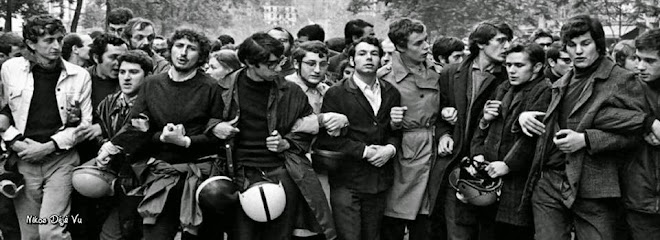The Greek Orthodox Easter
Posted: Apr 24, 2008 10:32 AM
All over Greece Holy Week and Easter are celebrated in great splendour and devoutness.
Greek Easter, the country's most important religious festival, arrives accompanied by the smells of spring, the rebirth of nature and the flower-carpeted ground.
Many of the traditions that bond the generations together occur during the Easter feast. Easter is the most sacred and celebrated of all of the Greek holidays. It begins with a 40-day fast, of the 40 days, one week is chosen for the complete fast, during that time only natural foods are eaten. No meats, dairy, fish, poultry or dishes that are prepared with these foods can be eaten. Shellfish can be eaten, however three days a week are meatless days during the remaining weeks of the fast. During Holy Week complete fasting is to take place. Palm Sunday, which is the first day of the Holy Week, is a day when only fish and fish courses are served.
On Saturday before Easter, the food that will be served on Easter Sunday is taken to the church and blessed by the priest.
The red eggs for just after the Resurrection and the traditional Resurrection soup, "mageritsa," will be the wife's first concern, and her preparations will begin early in the Holy Week.
That preparation means the cleaning and decoration of the house, the baking of the Easter biscuits and bread and the dyeing of the eggs.
During Holy Week the churches are full each evening as the people follow, once more the Passion of Our Lord. Then at midnight on the Saturday the bells ring out joyfully: the faithful, candles lit, can celebrate the Resurrection.
The meal afterwards consists of the "mageritsa," the red eggs are knocked and the traditional phrase "Christ is risen" will be heard all around the table.
On Easter Sunday, spit-roast lamb is the centerpiece of the table. In the early morning the spits will be turning in the courtyards and under the shady trees as the lamb "kokoretsi" is slowly cooked, and the aroma of the roasting lamb wafts from one end of Greece to the other.
These are customs related to the religious holiday of Easter which is the biggest celebration of the Orthodox Christians and the one richest in folklore. The word “Pascha”, Easter in Greek, stems from the Jewish “Pasah” which means “Passover”. Jewish people celebrated “Pasah” to commemorate their liberation from the Egyptians and the passage of the Red sea, while Christians celebrate the resurrection of Christ the Saviour and the passage from death to life. The corresponding Greek word for “Pascha” is “Lambri” (Brightness) because the day of the resurrection of Christ is a day full of joy and exhilaration.
Easter is a moveable holiday. Its celebration falls on the first Sunday after the full moon of the spring equinox. All over the country a plethora of customs and traditions are observed during the week prior to Easter (Holy Week).
The preparations for the celebration of the Resurrection start on Holy Thursday. On that day housewives traditionally prepare tsourekia (sweet buns resembling brioche) and colour eggs with special red dyes. Ever since antiquity the egg symbolises the renewal of life and the red colour symbolises the blood of Christ. In the past, people used to place the first red egg on the icon stand of the house in order to cast out evil spirits. In some villages they used to mark the head and the back of small lambs with the red dye used for the dyeing of the eggs. They also used to keep one of the big round Holy Thursday loaves at the icon stand in order to protect the members of the family from spells.
Friday is the most sacred day of the Holy Week, the day of the culmination of the passion of Christ with the deposition from the cross and Christ’s burial. Because it is a day of mourning, housewives do not do any house chores, avoiding even cooking. Women and children go to church to decorate the Epitaph (Bier of Christ) with flowers they collect or buy. In the morning of Good Friday, Christ’s Burial is reenacted in church and in the evening the Epitaph procession takes place.
On Easter Saturday morning, preparations start for the festive dinner of the night of the Resurrection and housewives cook “maghiritsa” (a tripe and herbs soup). Shortly before midnight, people gather in church holding white candles which they light with the “Holy Light” distributed by the priest. When the latter chants “Christ is risen” (Christos Anesti), people exchange wishes and the so-called “Kiss of Love”. With the “Holy Light” of the candles they thrice make the sign of the cross on the door post over the front door of their houses for good luck. Then they allgather around the festively laid table, they crack red eggs and feast on the traditional “maghiritsa”.
On Easter Sunday morning, in many parts of the country lamb is prepared on the spit. In other regions, the meat for the Easter table - lamb or kid - is roasted in the oven. There is a festive atmosphere everywhere and people eat and dance usually until late into the night.
EXTRA: Pasxa/Easter in Halifax, N.S. 2007 Greek Style! XRISTOS ANESTH!
Sat. April 7th/ Sun. April 8th 2007. Annual Fireworks show (better than any H.R.M. show!) goes off at St. George's Greek Orthodox Church in Halifax, N.S. at 12:00 am for Easter celebrations. There is mass inside the church and we are putting on the show. Weather sucked with 20 cm's of snow falling but that did not stop anyone!
Nikos Deja Vu
http://n1999k.blogspot.com



No comments:
Post a Comment